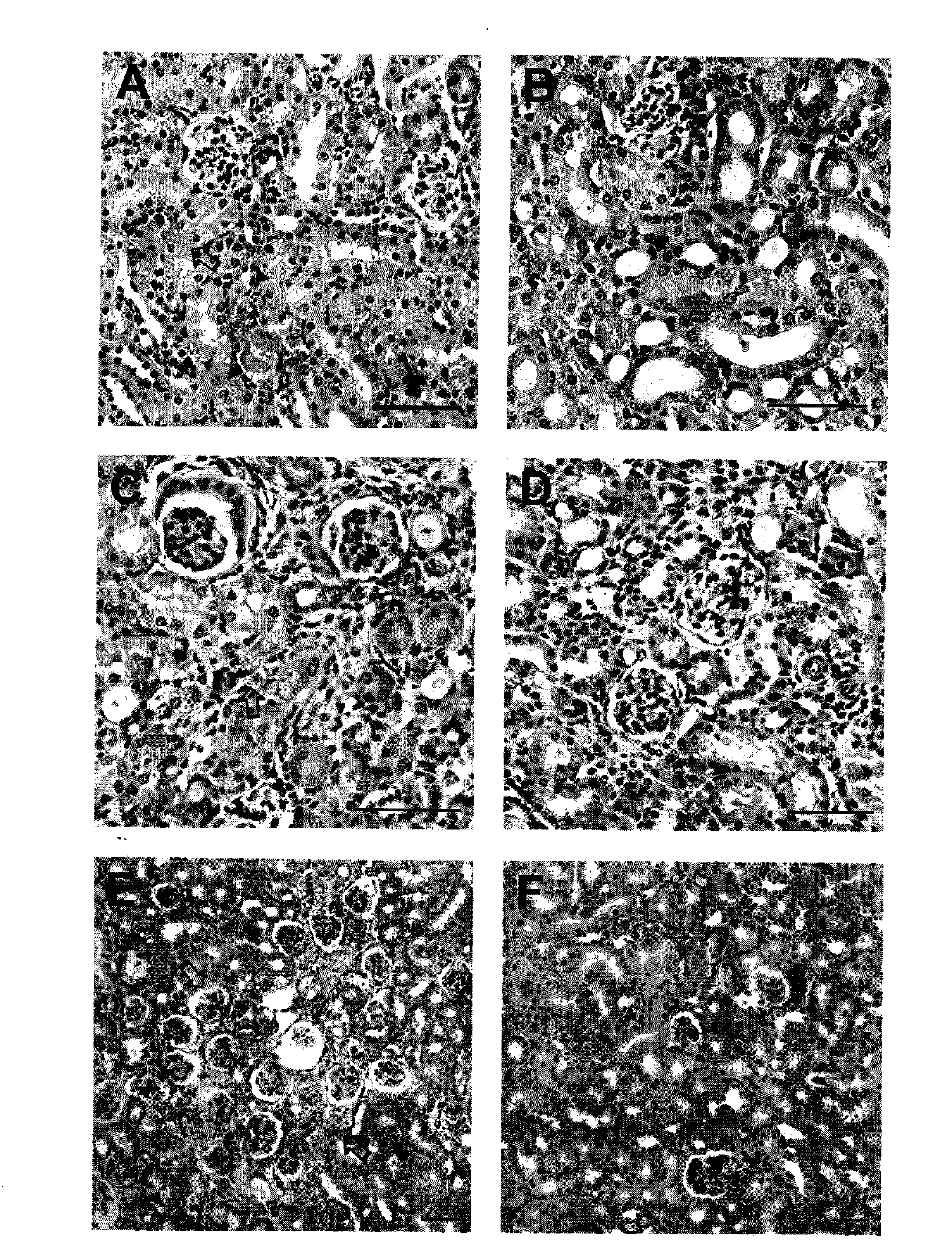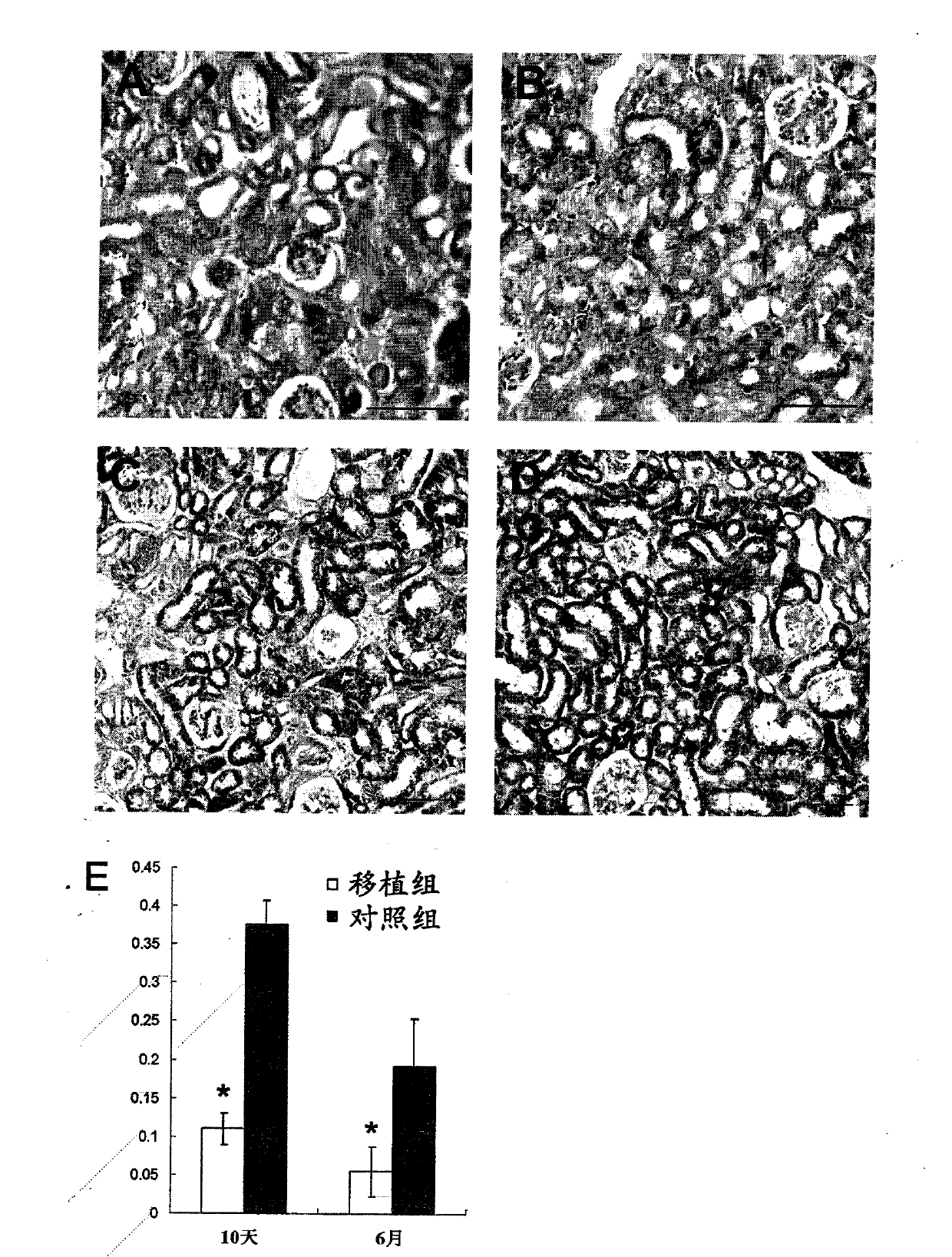Use of human fat-derived mesenchymal stem cells in treatment of diseases in kidney and ocular fundus
An adipose-derived, stem cell technology, applied in sensory diseases, animal cells, urinary system diseases, etc.
- Summary
- Abstract
- Description
- Claims
- Application Information
AI Technical Summary
Problems solved by technology
Method used
Image
Examples
Embodiment 1
[0037] Embodiment 1: related experimental methods
[0038] 1.1. Culture and expansion of human adipose-derived MSCs
[0039] Adult adipose tissue was taken, washed repeatedly with D-Hank'S solution, cut into pieces, digested with 0.2% type I collagenase at 37°C for 30 minutes, washed with a large amount of D-Hank'S solution to terminate the action of type I collagenase, centrifuged at 1000r / m, After 10 minutes, filter with a 100-mesh filter, and repeatedly blow with a pipette to make a single-cell suspension, count, and inoculate at a density of 2×10 6 / ml, with complete medium (containing 58% DMEM / F12+40% MCDB-201, 2% fetal calf serum (FCS), 10ng / ml EGF, 10ng / ml PDGF, 1× insulin-transferrin-selenite Acid (Insulin-Transferrin-Selenium, ITS), 1 × linoleic acid-bovine serum albumin (linoleic acid-bovineserum albumin, LA-BSA), 50μM β-mercaptoethanol, 2mM L-glutamine, 100μg / ml penicillin and 100U / ml streptomycin sulfate), placed at 37°C, 5% CO 2 Cultivate in an incubator, chang...
Embodiment 2
[0118] Example 2: Research on the effect and mechanism of human adipose-derived mesenchymal stem cells in renal ischemia-reperfusion model
[0119] 2.1. Morphology and phenotype of cultured hAD-MSCs
[0120] In the primary culture of MSCs isolated from human fat, there are two types of cells, one is fibroblast-like, which grows scatteredly; the other is endothelial-like, which is polygonal and grows tightly. After subculture, the endothelial-like cells gradually decreased, and basically disappeared at the second passage, and all the visual fields were spindle cells ( figure 1 .B). Flow cytometry analysis showed that hAD-MSCs highly expressed CD29, CD44, CD105 and Flk-1, while hematopoietic and endothelial markers (CD31, CD34 and CD45) were negative, and their expression of MHC class II molecules was low ( figure 1 .A). Cell cycle analysis found that most hAD-MSCs were in the G0 / G1 phase ( figure 1 .C). The hAD-MSCs we isolated and cultured have multilineage differentiatio...
Embodiment 3
[0143] Example 3: Effect of hAD-MSCs in retinal degeneration rat model
[0144] 3.1. Pathological evaluation of therapeutic effect after hAD-MSCs transplantation
[0145] In normal rats, the retinal pigment epithelium was intact, the single layer of PRE cells was flat, arranged neatly and continuously, the outer segments of photoreceptor cells were regularly arranged longitudinally, and each layer of the retina was clear. After sodium iodate injection, retinal RPE cells were first damaged. As shown in the figure, the number of RPE cells began to decrease 1 day after injection, and the arrangement of the outer segment layer of photoreceptor cells began to be disordered. hAD-MSCs transplantation group ( Figure 10 .B), compared with the control group ( Figure 10 .A) There is basically no difference in the degree of retinal damage and repair. Three days after sodium iodate tail vein injection, the RPE cells in the control group were further reduced, and the thickness of the p...
PUM
 Login to View More
Login to View More Abstract
Description
Claims
Application Information
 Login to View More
Login to View More - R&D
- Intellectual Property
- Life Sciences
- Materials
- Tech Scout
- Unparalleled Data Quality
- Higher Quality Content
- 60% Fewer Hallucinations
Browse by: Latest US Patents, China's latest patents, Technical Efficacy Thesaurus, Application Domain, Technology Topic, Popular Technical Reports.
© 2025 PatSnap. All rights reserved.Legal|Privacy policy|Modern Slavery Act Transparency Statement|Sitemap|About US| Contact US: help@patsnap.com



